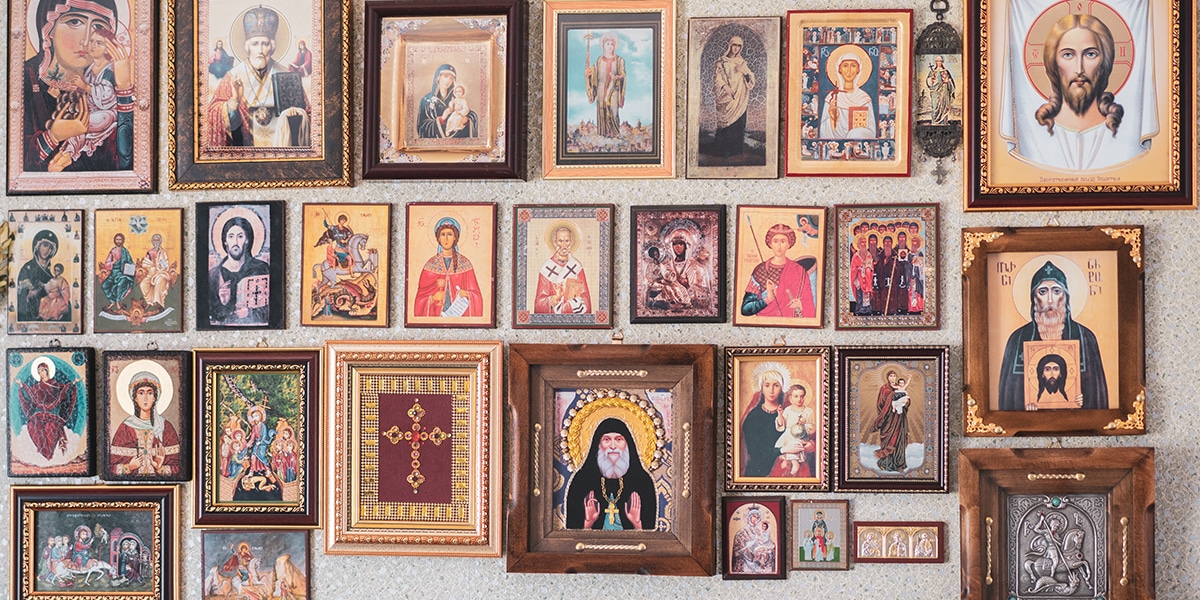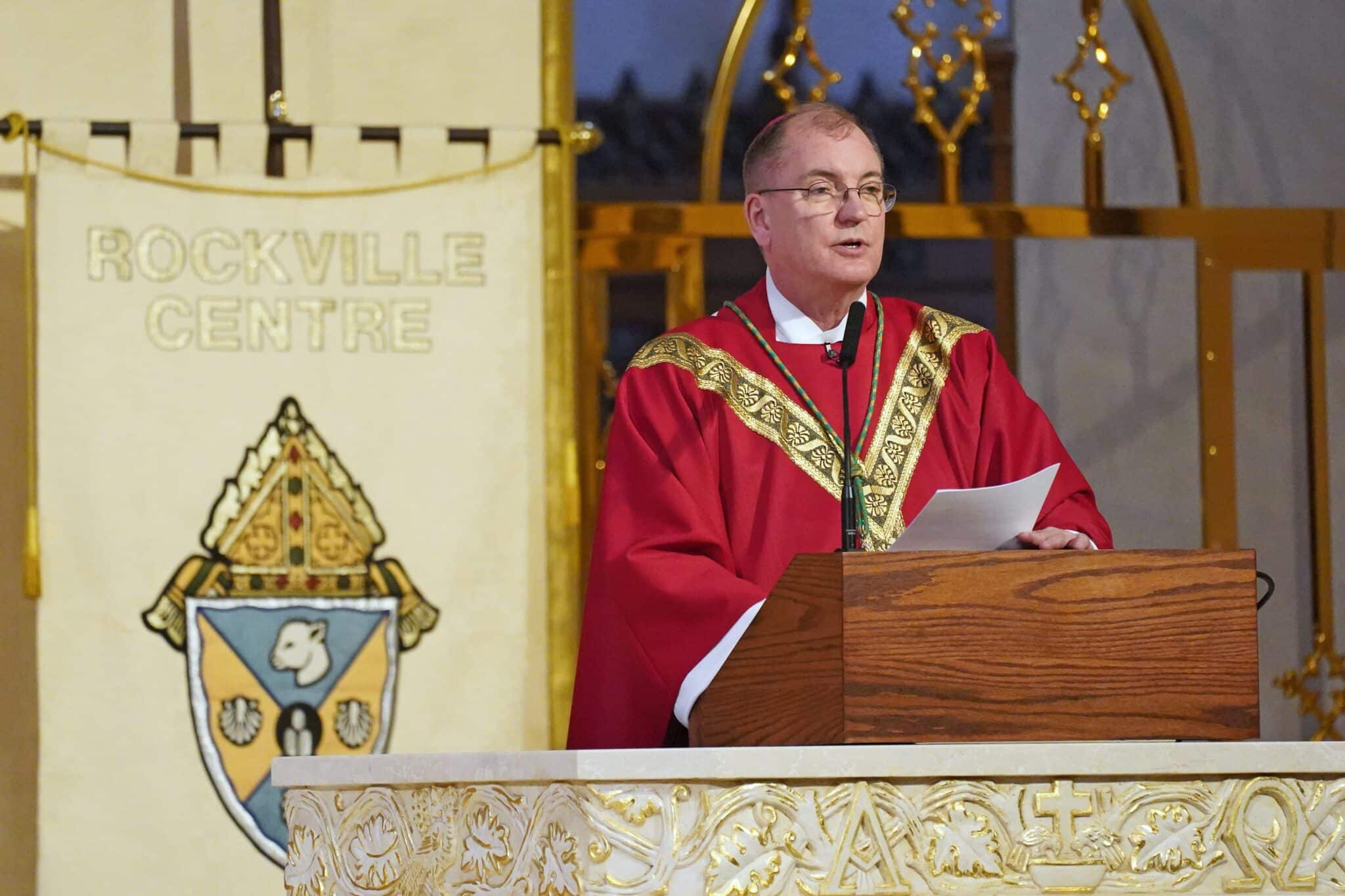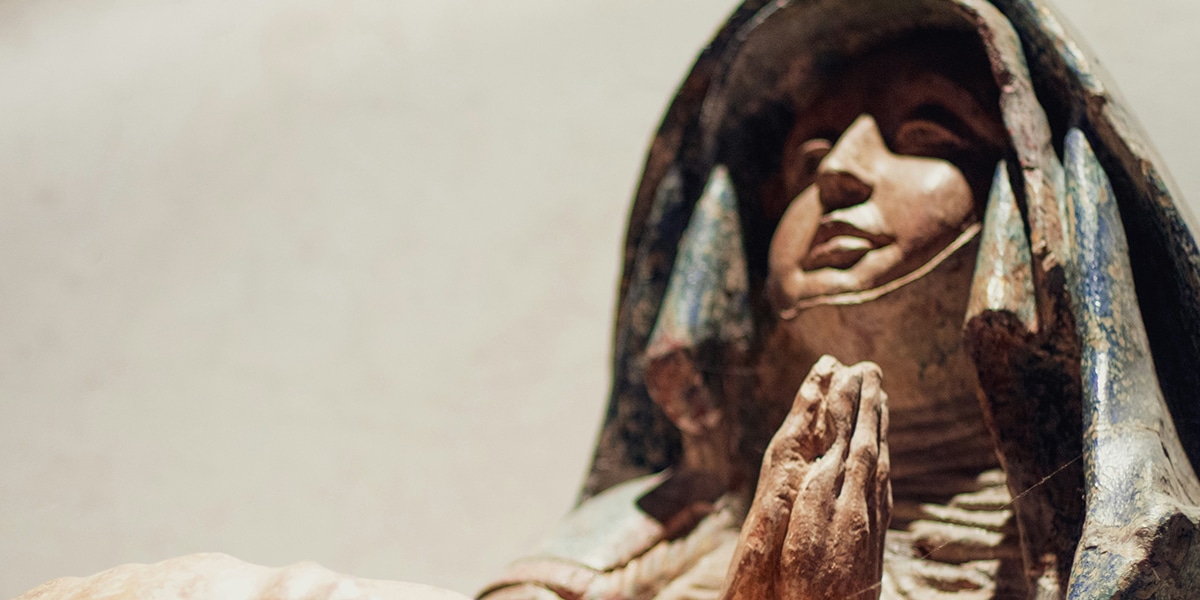If you had to name a patron saint of the Internet, whom would you choose? By 1999, a movement had sprung up among Catholic dot-com workers to petition Pope John Paul II for their own patron saint. And they had someone in mind: the learned Spanish bishop, Saint Isidore of Seville.
Because Saint Isidore died in 672, he obviously never surfed the Web. That tiny detail did not trouble his supporters, however. They pointed out that in his lifetime Isidore compiled a 30-volume encyclopedia of all knowledge then extant. This encyclopedia, the dot-com Catholics said, could be regarded as the world’s first database.
At this writing, the Holy Father has not yet responded to the request to make Saint Isidore the patron of the Internet. If today the pope were to give Saint Isidore the nod, he would be playing a game of catch-up. Over the last three years, thanks to Web sites, chat rooms and e-mail, the enthusiasm for Saint Isidore among Catholics who work in the Internet industry and Catholics who surf the Web has made his patronage an unofficial fact.
Deciding which saint gets to be patron of what cause has always been a grassroots movement. From time to time popes have officially appointed a patron saint (Pope John Paul II, for example, has named Saint Francis of Assisi patron saint of ecology and Saint Thomas More patron saint of statesmen and politicians). But by and large, associating a particular saint with a particular need is a manifestation of devotion from the folks in the pews.
Saint Isidore is not the only saint who has been “updated.” In our day we find Saint Helen as patron of divorced people, Saint Margaret of Cortona for single mothers, Saint Aloysius Gonzaga for AIDS patients and their caregivers, Saint Benedict Joseph Labré for homeless people, Saint Clare of Assisi for television, Saint Martin de Porres for those who suffer discrimination and Saint Monica for lapsed Catholics.
Powerful Patrons
The idea of a patron saint is as old as the Church and, as is the case with so many aspects of Catholicism, it comes to us from the Romans. In ancient Rome, a patron was a man or woman of wealth, status and influence. Just as a teacher will spend extra time with a promising student or a corporate mentor will guide up-and-coming junior executives, a patron served as a benefactor and advocate for a lucky handful of deserving clients.
If a client was sick, the patron found him a good doctor. If a client had a run-in with the law, the patron sorted things out with the authorities. If a client fell into debt, the patron paid his bills. An example from the life of one of our greatest saints will illustrate the old Roman patron-client relationship.
In 370, the 16-year-old Augustine was in despair. After only one year away at school his parents had called him back home. Patricius and Monica had managed to scrape together enough money for their son’s first year of schooling, but now it was apparent that the cost of keeping him in the academy at Madaura was beyond their means.
For help, Patricius turned to his patron, Romanianus, the wealthiest and most important man in the district. After hearing Patricius’s need, Romanianus offered to subsidize Augustine’s entire education—and not at some backwater like Madaura but at the university at Carthage, the Harvard of Roman Africa.
This episode from the life of Saint Augustine is typical of the patron-client relationships that existed throughout the Roman world. It is also the earthly model of the relationship we have with patron saints. Try to think of it this way: We are Augustine’s parents and we’ve got a problem; the influential person we turn to for help is the patron saint.
All Catholics know from personal experience how powerful the prayers of the saints can be before the throne of God, but how does Saint Christopher get to be the patron of travelers? And why is Saint Lucy the saint invoked when someone has an eye ailment?
There’s something called a principle of affinity at work here. We look at a saint and we see something in the saint’s life that reminds us of our own situation. Doctors venerate Saints Cosmas and Damian because they were doctors. Travelers invoke Saint Christopher because during his life he carried travelers safely across a dangerous river. Saint Lucy is the patron saint of eye ailments because in the course of her martyrdom her own eyes were torn out by her executioners.
Sometimes this principle of affinity operates in reverse. Think of Saint Sebastian, the good-looking martyr who’s always depicted stuck through with arrows. Saint Sebastian is the patron saint of archers, not because he was an archer himself but because he was the archers’ target. Another good example is Saint Lydwina: She took a nasty fall on the ice that left her a lifelong invalid, and so Lydwina is the patron saint of ice skaters.
Divorced and Single Mothers
Going back to the discussion of patron saints for modern causes, we’ll begin with Saint Helen (249-329). Because she found the True Cross in Jerusalem, for many centuries devotion to Saint Helen has been linked to devotion to the Holy Cross. It would be hard to find a painting, statue or holy card of her that does not depict her embracing the cross.
But there is another, sadder facet of Helen’s life. After 22 years of marriage, Helen’s husband, Constantius, divorced her in order to make a politically advantageous marriage with a young woman who was a member of Rome’s imperial family.
Clearly, Saint Helen would be a natural choice as patron of divorced and divorcing people, so why has this devotion to her arisen only recently? For most of the 1,700 years since Helen’s death, divorce was rare, even among non-Catholics. Among Catholics it was almost unthinkable. Today, unfortunately, when divorce has become commonplace, Saint Helen is offered to unhappy spouses as a heavenly patron who can truly sympathize with their anguish.
Saint Margaret of Cortona (1247-1297) was only 13 or 14 when she became the mistress of a young nobleman named Arsenio. Although her lover made it clear that he would never marry her, Margaret lived with Arsenio for nine years, and even had a son with him. She hoped at some point her lover would change his mind and become her husband. He never did. When Arsenio was murdered, the shock caused Margaret to reevaluate the path she had chosen. In time, her conversion led her to take vows as a Franciscan sister.
When she was canonized in 1728, Margaret was held up to the faithful as “a second Magdalene,” a woman who had turned away from her sinful life and spent the rest of her days in prayer and penance.
Children born out of wedlock were not unheard-of in the 18th century. Why then did Church authorities not make Saint Margaret the patron of single mothers in 1728? The most likely answer is that they feared it would suggest the Church was condoning illegitimacy.
Saint Margaret remains the patron of anyone—woman or man—who has turned away from a sinful life. But today she is also the patron of mothers who, for whatever reason, are raising their children alone.
Television and Homeless People
With Saint Clare of Assisi we come to one of those infrequent instances when a pope assigned the area of patronage himself. In 1958, Pope Pius XII named Saint Clare patron of television. He based his decision on the testimony of one of the witnesses in Clare’s canonization proceedings.
One Christmas Eve, Clare was so ill she could not leave her bed to attend Midnight Mass. After all the nuns had left for the chapel, Clare sighed and said, “Look, Lord God, I have been left here alone with you.” At that moment, she had a vision of the Mass. Not only could she see what was happening in the distant church, but she could also hear the organ music and the singing as clearly as if she were present. Pope Pius interpreted this miracle as the first live broadcast.
Christ once said of himself, “Foxes have dens and birds of the sky have nests, but the Son of Man has nowhere to rest his head” (Luke 9:58). In his zeal to imitate Our Lord, Saint Benedict Joseph Labré (1748-1783) decided to apply these words literally to his own life. He became a full-time pilgrim. Year after year he walked from one great shrine in Europe to another. He never begged, but relied on whatever strangers were moved to give him. He slept outdoors, and he never had a home.
In 1774, at age 26, Benedict Joseph decided to remain permanently in Rome. He lived in the Colosseum, attended Mass daily at the Church of Santa Maria dei Monti nearby, and spent his days visiting the churches of Rome.
Yet Benedict Joseph was not a romantic figure. He never bathed or washed his clothes. Some custodians, offended by the look and the smell of him, drove him out of their churches. When Benedict Joseph died, however, all his eccentricities were forgotten, or at least forgiven. Immediately he became the focus of a grassroots devotion. The priests of Santa Maria dei Monti had a death mask made of his face, preserved his filthy rags as relics and buried him in the church he loved.
After a rigorous investigation to make certain that he was neither mentally disturbed nor a fraud, Pope Leo XIII canonized Benedict Joseph Labré in 1883. Since then he has been popularly acclaimed as patron saint of homeless people.
Lapsed Catholics, AIDS, and People Experiencing Discrimination
Although it may seem to be a modern phenomenon, Catholics who have given up practicing the faith have always been with us. Saint Monica (331-387) experienced this firsthand when her favorite child, Augustine, turned away from the Church and became a Manichee, a member of a pagan sect that believed there were two gods—one good, the other evil—locked in eternal conflict for human souls. According to the Manichees, throughout history many different “Jesuses” had come to earth to assist humankind in the struggle against evil, but none of them had ever managed to conquer the powers of darkness and save humankind.
Monica was so hurt and angry when she learned that Augustine had become a Manichee that she barred the door and refused to let her son in the house.
For 12 years she begged God to bring her son back to the Catholic faith. One night, Monica had a dream. She saw herself standing on a narrow wooden beam with a handsome, radiant young man. The youth told her to dry her tears because one day her son Augustine would be with her. When she told Augustine her dream, he said they could indeed be together if she became a Manichee. Monica, who had a quick wit and sharp tongue, answered, “He didn’t say I was to be with you. He said you were to be with me!”
In the end, of course, Monica’s prayers were answered. Augustine took instruction from the great Saint Ambrose and was baptized by him on the night of the Easter Vigil, April 24-25, 387.
Saint Monica’s place as patron of lapsed Catholics was made official in the 15th century when Pope Eugenius IV established a confraternity in her honor to pray for Catholics who strayed from the faith. The Confraternity of Saint Monica is still in existence today, and like their patron, the confraternity’s members pray with special fervor for family members who have left the Church.
Many readers will remember the days when Saint Aloysius Gonzaga (1568-1591) was held up as a model of purity for young people. And he was an excellent model—as a member of one of Renaissance Italy’s most powerful ruling families, he was expected to be sexually promiscuous. But the devout, serious-minded Aloysius avoided boys his own age whom he considered morally loose, and walked out of any social function that took a turn toward the lascivious.
When Aloysius entered the Jesuit novitiate in Rome, he was assigned to work in one of the city’s hospitals. He hated the job. Aloysius was squeamish and 16th-century hospitals were far from tidy and antiseptic. In January 1591, plague struck Rome. The need for nurses was so great that even the Jesuits’ Father General worked in the wards. In spite of his dread of the disease, Aloysius summoned all his courage and set to work.
He went out into the streets and carried the sick and the dying to the hospital. He washed the patients, dressed them in fresh clothes, fed them and found them a bed or at least a pallet to lie on. He did not shrink from any task, no matter how repulsive. Such close contact with a deadly illness proved fatal. Within a few short weeks, Aloysius contracted the plague and died. He was 23 years old.
For his compassion and courage in the face of an incurable disease, Saint Aloysius Gonzaga has become the patron of both AIDS sufferers and their caregivers.
Saint Martin de Porres (1575-1639), the patron of all those who suffer discrimination, knew prejudice from the moment of his birth. His unmarried mother, Ana Velazquez, was a freed slave. His father, Don Juan de Porres, was a Spanish gentleman. Because Martin was born with the features and dark complexion of his African mother, Don Juan refused to acknowledge his illegitimate son.
Martin had a calling to the religious life, but his ancestry proved to be a liability. By law in Peru, descendants of Africans and Indians were barred from becoming full members of religious orders. The only route open to Martin was to ask the Dominicans of Holy Rosary Friary in Lima to accept him as a donado, a layman who performed menial tasks in the friary in return for the privilege of wearing the habit and living in the religious community.
After eight years at Holy Rosary, the prior, Juan de Lorenzana, decided to turn a blind eye to the law and permit Martin to take his vows as a Dominican brother. But Holy Rosary was home to 300 men, and not all were as open-minded as Prior de Lorenzana. One of the novices called Martin a “mulatto dog.” One of the priests mocked him for being illegitimate and descended from slaves.
Incredibly, a lifetime of scorn and insults did not turn Martin into an angry, resentful man. He bore sneers and contempt with heroic patience. It would be going too far to say that by his example he converted every bigot in Peru but, by the time he died, Martin had won the affection and respect of many of his fellow Dominicans as well as a host of people outside the friary.
Distinctions of class and race were forgotten at Martin’s funeral. After the Requiem Mass had been said, the viceroy of Peru, the archbishop of Mexico, the bishop of Cuzco and the judge of the Royal Court lifted the coffin of this poor, illegitimate man of mixed race and carried it to the grave.
Saints: Our ‘Good Neighbors’
Catholics are intensely attached to our saints. We regard these heavenly intercessors not only as sources of inspiration, but also as our “good neighbors,” as the English mystic Julian of Norwich described them.
Saints are faithful and reliable friends who come to our help during times of trouble. Although times change, our need for the help of the saints remains constant. And so, in every age, Catholics have assigned new areas of patronage to saints who have been longtime favorites.








